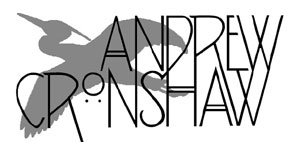
- Andrew Cronshaw website -
- Andrew Cronshaw MySpace -
- Cloud Valley Music website -
- Andrew Cronshaw website -
- Andrew Cronshaw MySpace -
- Back to Reviews Introduction page -
Written in Folk Roots issue 156, 1996
PACO DÍEZ Y LA BAZANCA
Aguaclara
Several SCD-638 (1995)
A fairly average instrumental rumpty-tumpty opening track nearly got this
consigned to the depressingly large stack of the dull, pedestrian, or wannabe
folk-rock, new-age or derivative celtoid albums that have been in such a
majority in Spanish releases that I was beginning to wonder if any life left in
regional traditions was withering away behind their smokescreen.
That might indeed be happening, but as it
proceeds it becomes clear that this album is on the side of the angels.
The material is drawn mostly from Castilla and
León, the region away from the north coast but west, north-west and north of
Madrid, reaching right over to border on Portugal and Galicia in the west and
touching all the north-coast regions. Particularly represented is the western
area including the cities of Zamora, Salamanca, Avila and Valladolid, which last
is the home of Paco Díez, singer and player of gaitas, both Zamoran and
Galician, guitar and traditional percussion. Other band members add further
acoustic instruments including hurdy-gurdy, melodeon, laud, bandurria, clarinet,
three-hole whistle, and more percussion, and the overall sound has an exuberant
thickness, led by Díez’s baritone which some might find not to their taste, but
it’s what works with this music; he doesn’t sound as if he’s trying to be
traditional, he just sings like he understands and means it, and the result is
as fine a recording of the essence of the music of his region as you’re likely
to find.
The distinctive tuning of the bagpipes,
uncompromised by being put into equal temperament to fit the other instruments,
gives a ragged but right feel in melodically varied songs sung and played with
such an accessible, spirited populism that at first listen it would be possible
to miss the fact that the arrangements are so well-judged they move the whole
thing on without drawing attention to themselves; no precious self-consciousness
here. The production is just right for the project - what we get is the music’s
life, not a mental image of the studio.
Not to say that there isn’t the odd synth in
there, but unlike several Spanish recordings in the past the use of electronics
is subtle, mature and supportive - no dated whizzes or washes. There is the
occasional atmospheric touch; Canto de Arada is accompanied not just by
cow-bells but by a whole, presumably sampled, cow. Damien Hirst, eat your heart
out (now that might be an interesting piece of performance art).
© 1996
Andrew Cronshaw
You're welcome to quote from reviews on this site, but please credit the writer
and fRoots.
Links:
fRoots - The feature and
review-packed UK-based monthly world roots music magazine in which these reviews
were published, and by whose permission they're reproduced here.
It's not practical to give, and keep up to date,
current contact details and sales sources for all the artists and labels in
these reviews, but try Googling for them, and where possible buy direct from the
artists.
CDRoots.com in the USA, run by
Cliff Furnald, is a reliable and independent online retail source, with reviews,
of many of the CDs in these reviews; it's connected to his excellent online magazine
Rootsworld.com
For more reviews click on the regions below
NORDIC
BALTIC
IBERIA (& islands)
CENTRAL & EASTERN EUROPE, & CAUCASUS
OTHER EUROPEAN AMERICAS OTHER, AND WORLD IN GENERAL
- Back to Reviews Introduction page -